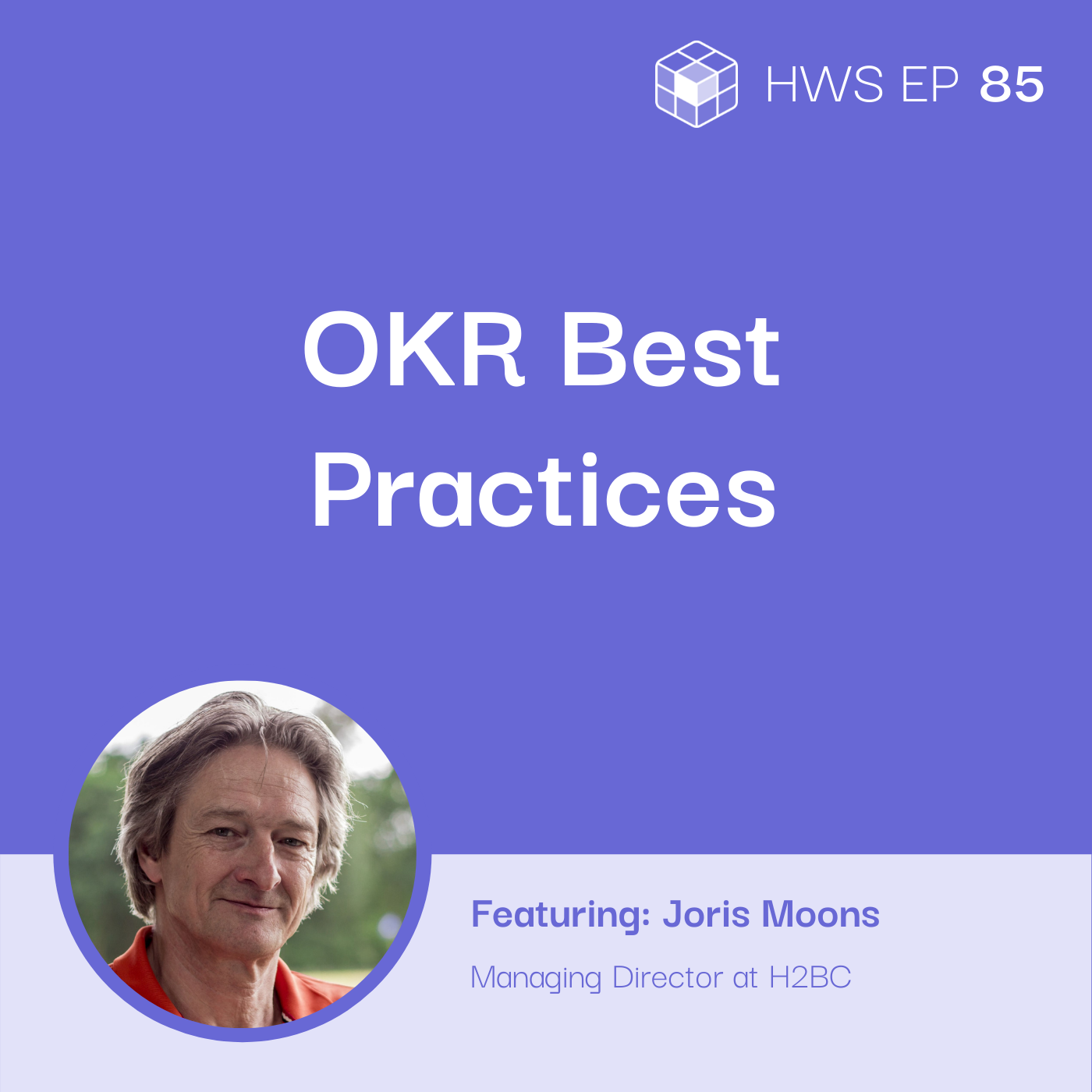Listen on:
Table of Contents:
Problem: How do you set your objectives and key results for success
There will always be great strategic ideas in an organization. But when there are so many plans and suggestions, how can they be turned into a well-executed strategy? If you have several moving parts in your execution, how do you know these are all moving in the same direction? How do you set objectives and key results (OKR) to ensure the success of an organization?
“The main objectives of OKRs introduce the team or a corporation, or even an individual to actually dream. And try to realize your dream. I’m convinced that if you start dreaming, and you have a well-defined dream, that’s where I want you to go.”
Get your FACT straight
In this episode, Joris Moons share an acronym called F.A.C.T. to help you set your team’s OKR. It stands for Focus, Alliance, Commitment, and Tracking. The episode discusses how to make sure you follow these steps correctly.
Step #1: Focus on the Big Dream
Joris emphasized the importance of setting a big dream. While objectives should be both measurable and realistic, dreaming big helps you see the whole picture. It enables you to break into smaller, bite-sized key results. Some tips on setting these missions and visions include:
- Help the team understand why they’re doing a project, what’s it for, and how it will benefit them
- Focus on their roles to set clear expectations
- And as a CEO, remember your role is to help maintain the team’s focus
“It’s like in the eighties. Somebody sets up the horizon, and you have to pursue it. And if you postpone it and start procrastinating and all that sort of things, then probably all of a sudden, the elephant’s going to be in front of you. It’s going to be a huge, big animal. If you got the elephant in small pieces, little steaks, and eat one every day. Then by the end of the year, you ate the elephant.”
Step #2: Create Across the Board Alliances
If you want everyone on board, you need to create an environment that encourages them to share ideas. Let them speak and express how they want to help the team. As you do the legwork, you’ll find how much better the team does when they understand how to work together. They will then feel a sense of ownership.
“The second thing is that if you give this to the team, to the company, then all the stakeholders will have their say in what they can do, how they can do it, et cetera. And you get communication. That’s collaboration. A well-oiled machine that is starting to run…”
Step #3: Build Committed O.K.R.s
When we commit, we set our sights on achieving the goals that we have set for ourselves. So, it’s crucial how you need to challenge your obligations and have a meaningful discourse and discussion around them. Sometimes this discussion means saying no to things that don’t contribute to the goal. Meaning, are the tasks you’re doing contributing to the bigger picture, to you why?
“But, my last business, we grew really fast. Initially, we had a clear mission and vision. It was kind of clear among the founding teams and the first few employees. But then we grew really fast, and we messed up on not communicating this to everybody who joined the team… And the new head of sales was running after the enterprise, which was not really our thing. The new head of engineering came from a big data company before, and then he implemented this big data thing into our system, which was cool, but only for 5% of our customers. So, we ended up running in ten different directions, and nothing was working anymore, until we realized this happened because we never clarified the mission-vision of our organization. And once we had this down, things were moving again…”
Step #4: Track Your Progress
Commitment is essential, but tracking your progress is also essential. When you realize the things you could do now, accountability helps you track your progress. In the same way that athletes keep track of their stats and scores. You can use it to see where improvements can be made or if an objective is realistic.
“If you see people playing basketball or football or whatever, when they keep score, play in a completely different way than when they start. And so, tracking is pretty important because you have visuals for everybody to track progress. See where they can improve in what they’re doing. Then stretching again. As already mentioned, big, hairy audacious goals.”
Step #5: Hire the Right People
As soon as you’ve got your FACT straight, make sure your team is staffed correctly. You must hire the right people for the job. You can also hire three types of people. For the early days, you need guerrilla fighters who can move quickly. Having a war-like situation requires a strategy like it is in the military. It helps to have someone police-like that checks you and shoots down ideas that don’t contribute to the big goal when thinking outside of the box.
“Yes, these different types of managers. You have the crisis manager. Completely different types of people, and an entrepreneur or founder of a starter, when we need to reach these goals.”
Resources, books, and apps on setting OKR, which Joris recommends:
Start with Why: How Great Leaders Inspire Everyone to Take Action by Simon Sinek
Why Focus Matters Most: Focus on the same objective and the same good results. A is for Alliance. It comes close to focus. But for focus, it’s more like they have a discourse that should be followed up, discussing what the problem was. So keep the focus on the things that you should focus on…
This interview is part of the How We Solve podcast. To hear more from industry experts who are solving everyday business problems, check us out on Spotify, Apple Podcasts, and on our website.
About the guest

Joris Moons
An innovative and creative thinker with a broad and realistic view of all corporate activities, specifically integrating these activities into something that adds value. He integrates his long-term, creative thinking when helping teams build solid OKRs. He's a die-hard golfer and incorporates golf in everything he does.
Listen on:
